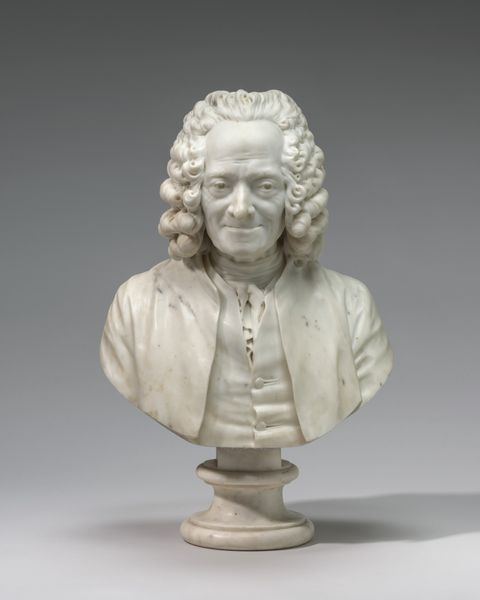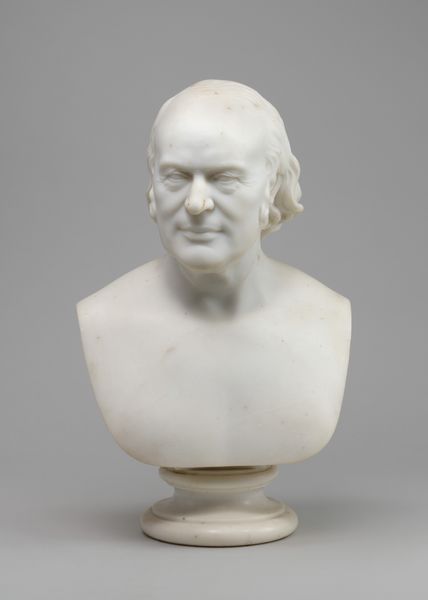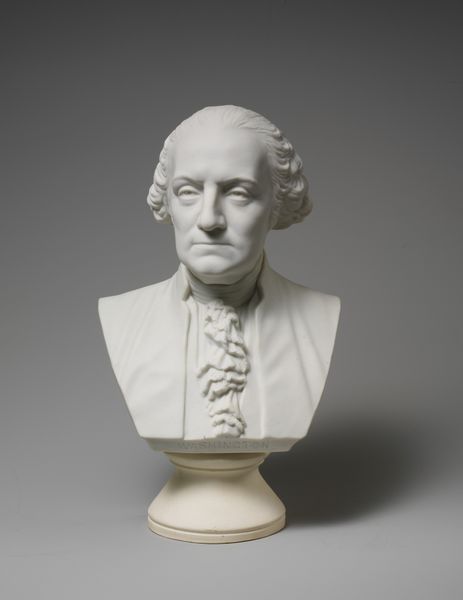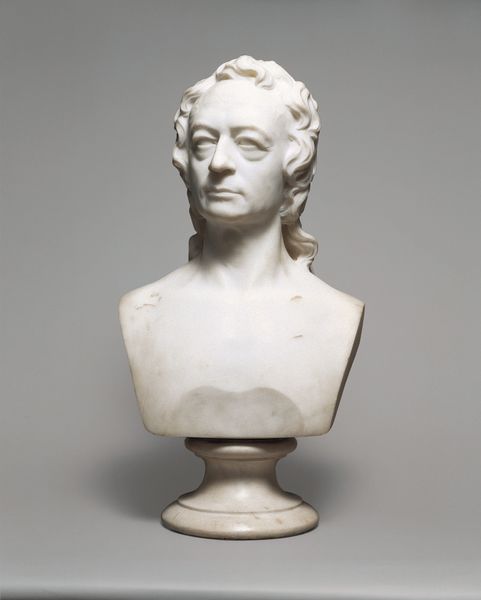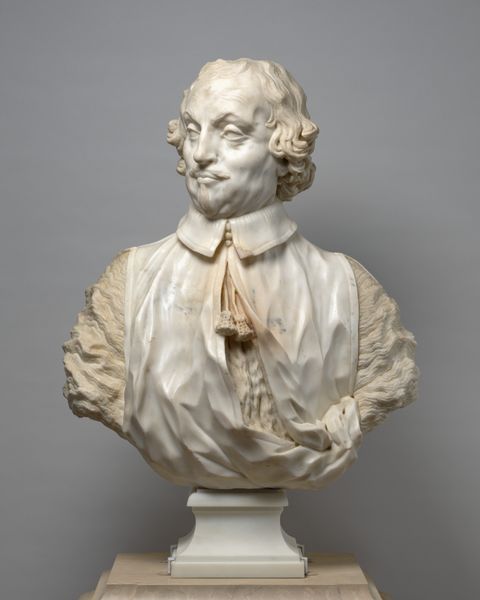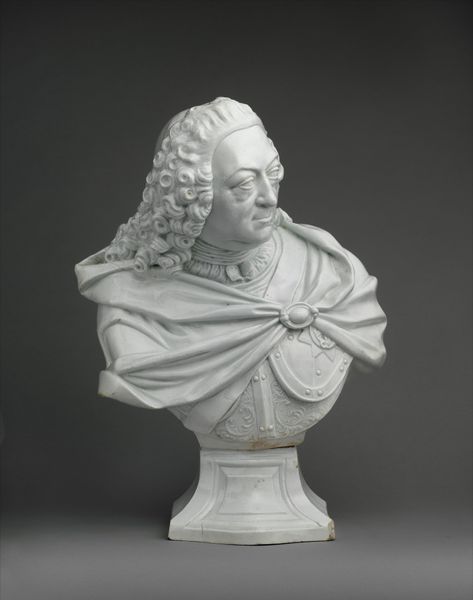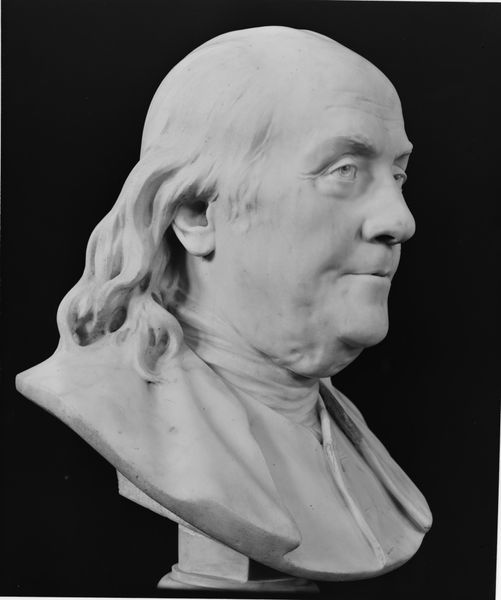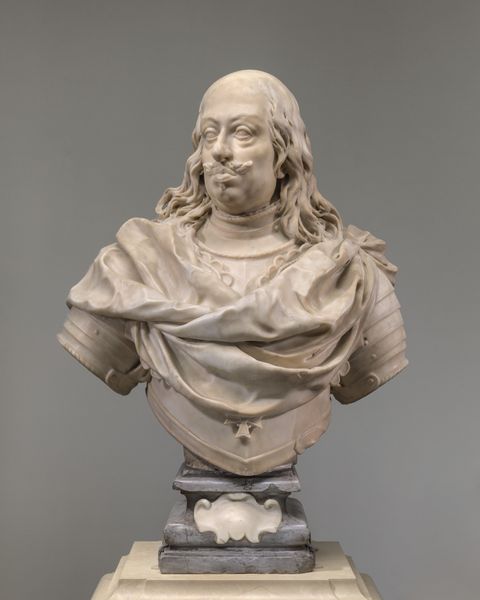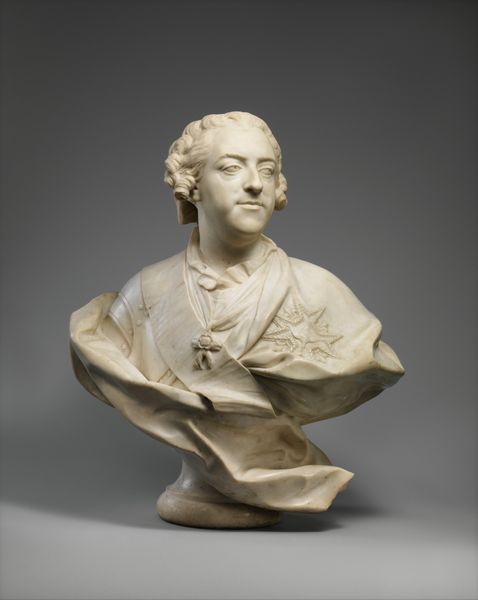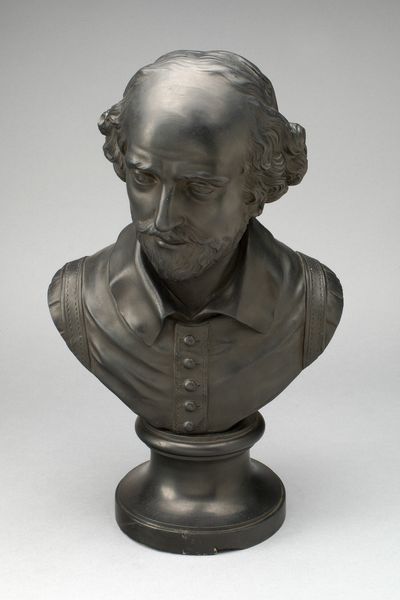
sculpture, marble
#
portrait
#
neoclacissism
#
sculpture
#
sculpture
#
decorative-art
#
marble
Dimensions: Overall (weight confirmed): 23 1/8 × 14 1/2 × 11 1/4 in., 87 lb. (58.7 × 36.8 × 28.6 cm, 39.5 kg); Height (without base): 17 1/2 in. (44.5 cm)
Copyright: Public Domain
Curator: Let's discuss Jean-Antoine Houdon's marble bust of Benjamin Franklin, created in 1778. You can find this at the Metropolitan Museum of Art. Editor: It’s struck me as monumental, somehow. The smoothness of the marble gives him such a stately presence. It also makes me wonder about the conditions it was produced in. Curator: Absolutely. Houdon was known for capturing a sense of enlightenment ideals in his work. And this piece comes about as Franklin served as minister to France during the American Revolution. The commission itself reflects Franklin's international celebrity and the Franco-American alliance. Editor: And Houdon, such a master of marble carving, what was that process like? Getting to that perfect surface, smoothing out the stone while keeping the original intent alive? Did Franklin see the sculpture? I wonder if his image would be disseminated to influence French popular opinion on the revolution. Curator: Yes, Franklin sat for Houdon during his time in Paris. The process certainly contributed to its lifelike quality, fitting in with the Neoclassical desire to return to a purer classical form that influenced not just the sculpture but how France positioned itself politically at that time. Replicas of the bust were produced and became incredibly popular both in Europe and the newly formed United States, turning a person into an icon. Editor: It’s also important to acknowledge the material implications: from the quarrying of the marble to the transportation across continents and the labor needed for such detailed carving. There's a whole social chain embedded in the marble itself. Curator: Exactly. This piece serves as a potent reminder that what appears as timeless and stoic marble is actually an amalgamation of its contemporary culture. How perceptions of leadership can be formed through artworks. Editor: It makes me appreciate all the labor—visible or not—that produced not only the image of Benjamin Franklin, but literally allowed it to come into existence, materially. Curator: It’s also a potent reminder of the power and purpose behind representing leadership figures, how imagery is deployed to inspire political movements, how this particular bust also helped galvanize public support for American independence. Editor: I see now how it underscores the intersection of artistic vision and a society ready to embrace—or construct—its heroes through carefully made material artifacts.
Comments
No comments
Be the first to comment and join the conversation on the ultimate creative platform.

